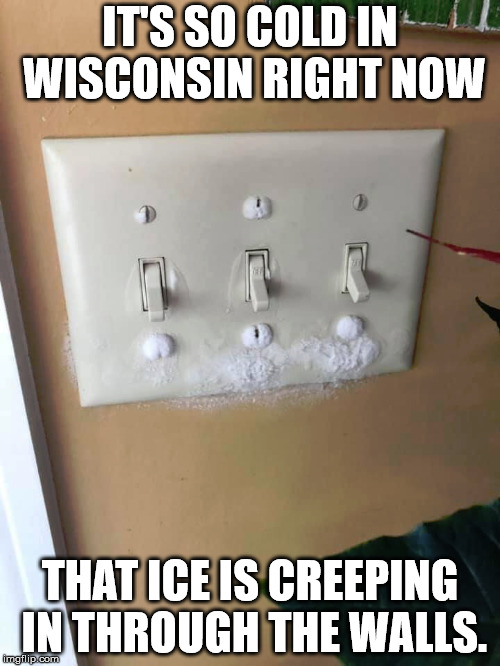


"The polar vortex is nothing new-in fact, it's thought that the term first appeared in an 1853 issue of E. Although the very active Polar Vortex during the recent cold season has finally broken down, its collapse will lead to some pretty dynamic weather patterns in the coming weeks. "Often during winter in the Northern Hemisphere, the polar vortex will become less stable and expand, sending cold Arctic air southward over the United States with the jet stream (right globe). The National Oceanic and Atmospheric Administration explains: "The term vortex refers to the counter-clockwise flow of air that helps keep the colder air close to the poles (left globe). This year, however, the vortex has weakened, allowing the freezing northern air to head south, leading to the frigid weather.

The polar vortex is a huge area of low pressure and cold air that typically resides surrounding both of the Earth's poles.

N8gSXMV616- NWS Weather Prediction Center February 11, 2021 The dreaded polar vortex will be making a trek south across a good portion of Western Canada this week, bringing a dangerous cold with it that will send daytime. It's still too early for specifics, but widespread and major impacts are possible. So, changes in the polar vortex in the stratosphere can affect the strength of the jet stream and as a result whether we get milder or colder weather in winter.Want more winter weather!? Next week may have plenty as a complex weather system is forecast to bring snow, sleet, and freezing rain from the Southern Plains to New England. One week in February, every state in the US experienced temperatures below freezing. This has been linked to many spells of cold winter weather in recent years. The polar vortex is an area of low pressure and extremely cold air that swirls over the Arctic. February 2021 was a classic example of the polar vortex weakening, sending a surge of Arctic air very far south. Sometimes the polar vortex can even break down entirely, in an event called a ‘ Sudden Stratospheric Warming’. During the winter months it breaks down, sending cold air. A weaker jet stream allows more frequent spells of northerly or easterly winds to affect the UK and in winter these bring very cold air from the Arctic and continental Europe. The polar vortex is to blame This frigid cold is compliments of the polar vortex, a large area of low pressure located near the poles. With a stronger jet stream, stormy and very wet weather tends to occur. In a typical UK winter, the jet stream brings winds from the west giving us our mild, damp climate. February 2015 tied for the coldest February on record and ranked as the 10th-coldest month, with eight days with temperatures below zero. The jet stream is a fast moving ribbon of air around 5 to 7 miles (8 to 11km) above the earth that drives weather systems from the Atlantic towards the UK.Ĭonversely, when the polar vortex weakens, the jet stream also tends to weaken and become distorted. The polar vortex struck again in the winter of 2014-2015. The polar vortex is an enormous, 3-dimensional ring of winds that surrounds the North and. How does the Polar Vortex affect our weather?Ī strong polar vortex favours a strong jet stream. The polar vortex influences the jet stream, which can bring cold winter weather to the U.S.


 0 kommentar(er)
0 kommentar(er)
